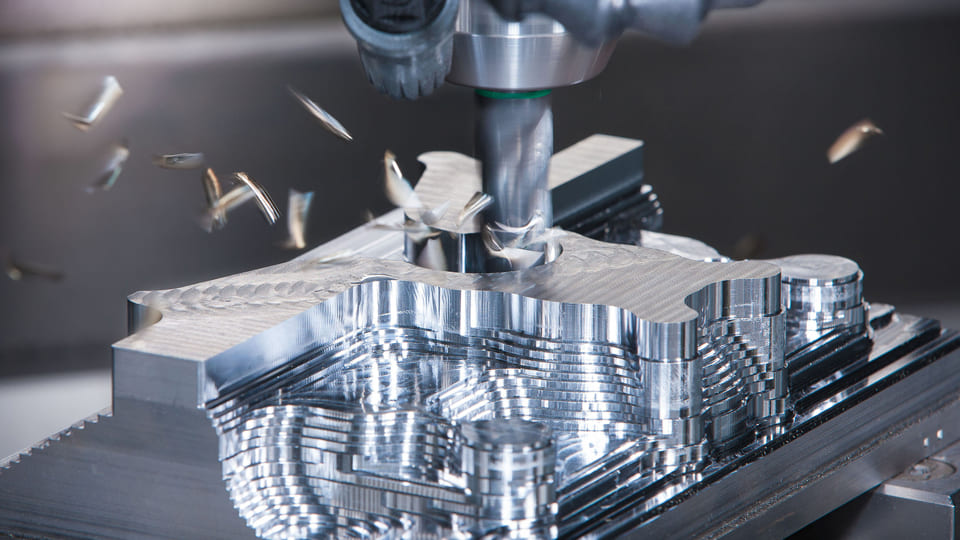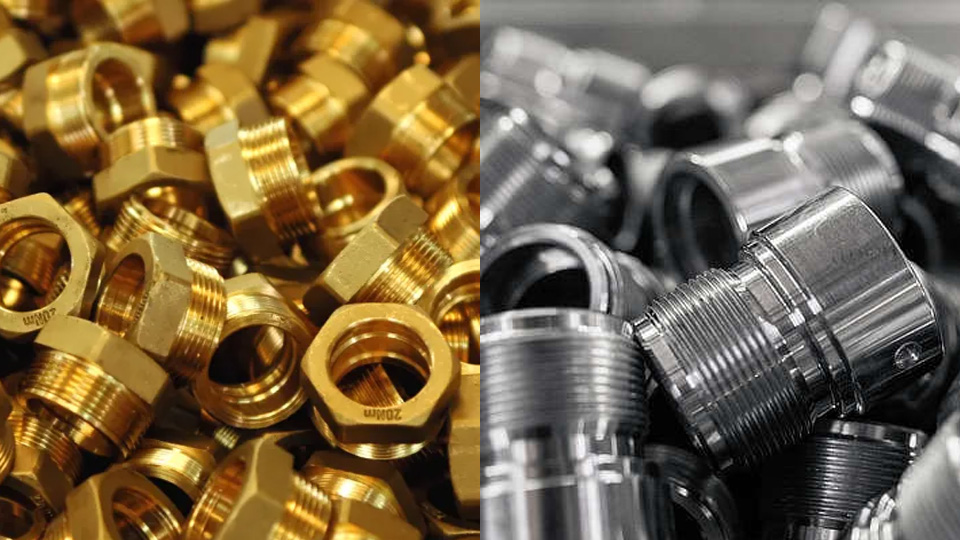What is Surface Finish?
Surface finish refers to the texture, roughness, and overall quality of the surface after manufacturing. Additionally, it can be defined as the condition of a surface after undergoing different surface treatment processes such as polishing, grinding, sandblasting, or coating.
Different parameters, such as roughness, waviness, and flatness, can measure surface finish. Usually, we can measure these parameters using a variety of methods.
The Value of Surface Finish
The quality of the surface finish can significantly impact product performance. For example, a rough surface can cause friction, wear, and tear on parts, while a smooth surface can increase a product’s durability and prevent wear and tear.
Let’s explore the crucial reason why surface finish is important.
The final component’s functionality
The surface quality of CNC machined parts affects measurement accuracy, friction, wear, tear, and other factors related to the individual part or product’s functionality. For example, a poorly finished surface will degrade over time, resulting in high friction and low functionality.
Product durability
The surface finish of a product also affects its durability. Products with a rough surface are more likely to rust, crack, or degrade over time because tiny cracks and pores can collect moisture, dirt, or other impurities. However, smooth surfaces are more resistant to corrosion and less likely to trap contaminants, extending the product’s life.
Appearance and brand image
The surface finish of a product affects its appearance, which is important in applications such as automotive, aerospace, and consumer products.
Products with a high-quality surface finish appear more professional and can enhance brand image and customer recognition. Additionally, a high-quality surface finish can make a product more attractive to customers, thereby driving sales.
Meet industry standards
Many industries have surface finish or roughness standards to ensure that a part or product meets specific performance and durability standards. For example, the aerospace industry has strict surface finish standards to ensure the safety and reliability of aircraft components.
Therefore, high-quality surface finishes are the basis for several specific standards in different industries.
Product cost effectiveness
Wear or corrosion are less likely to repair or replace a high-quality surface finish, thereby reducing maintenance costs and extending product life. Additionally, a high-quality surface finish can reduce manufacturing costs by eliminating the need for additional coatings or finishes.
Types of surface finishes
There are many methods of surface finish for CNC machined parts or products, each with its own advantages and disadvantages. However, mechanical, chemical, thermal, and coating surface treatments are most popular in manufacturing. Let’s go over them in detail.
Mechanical surface finish
Mechanical surface finish processes involve the use of mechanical forces to modify the surface of machined parts. There are numerous methods to carry it out, including grinding, polishing, shot blasting, sand blasting, and wire drawing.

Mechanical surface finish is excellent for removing surface imperfections, creating a smooth surface, and improving the material’s wear elasticity. This method can produce a specific surface texture or finish to enhance the aesthetic appeal of the material.
Chemical surface finish
As the name suggests, chemical surface finish involves the use of suitable chemical solutions to modify the surface of machined parts. The chemical solution reacts with the parts to form a protective layer that improves resistance to corrosion, oxidation, and wear.
Standard techniques for achieving chemical surface finishes include anodizing, electroplating, and passivation.
Coating surface finish
The coating process necessitates the formation of a thin protective layer on the surface of the material to enhance its corrosion and wear resistance. Different techniques, such as powder coating, electroplating, chemical vapor deposition, and spray painting, can achieve this.

Heat treatment
The heat treatment process involves using heat to modify a material’s properties by tailoring its microstructure. Techniques like annealing, quenching, tempering, and surface hardening can achieve this.
Heat-treated surfaces are suitable for improving a material’s mechanical properties, such as strength, toughness, and ductility, to improve its performance in specific applications.

Different surface treatment options
Surface quality is critical in numerical processing or other manufacturing processes to produce high-quality final products. There are a number of technologies to achieve the required surface quality, including electroplating, powder coating, zinc, anode oxidation, and laser melting. Let us discuss these options in more depth.
Electroplating
Electroplating is the process of depositing a thin layer of metal on the substrate to form an attractive and corrosion-resistant surface. Electroplating metals can range from gold to mercury and zinc.
Electronic, automotive, and aerospace components use metal electroplating in addition to decorations and jewelry.
Powder coating
Powder coating is a popular coating method in manufacturing, involving dry and finely grated powder applied to the metal surface through static sedimentation. First, the dye powder immerses the processed parts. The oven roasts these components, melts them, and forms them into a durable protective layer. As a result, the surface is smooth and not easy to crack or fade.
Both metal parts and non-metallic parts can benefit from powder coating treatments. However, it is the top choice for metal surface finishing.
Zinc Plating
Zinc plating refers to the process of applying a zinc layer to a metal component to prevent rust and corrosion. It is used to shield metals from harsh environments and maintain their structural integrity in industries such as construction, automotive, and shipping.
The zinc plating process consists of two main steps: using different techniques (heat-insulating, electro-zinc, and spraying) to clean metal surfaces and coatings. In addition, the coating thickness depends on the application, ranging from a few micrometers to a few millimeters.
Anodizing
Another surface treatment method, anodizing, improves the durability and appearance of machining parts or products, particularly those used in industrial and aerospace applications.
The process entails using electrochemical sedimentation to form a protective oxide layer on the metal surface. This anode oxidation treatment is especially suitable for aluminum. However, other metals, like mercury, zinc, and magnesium, can also benefit from anodizing.
Anodizing is the best alternative to powder coatings for the surface finish of complex-shaped processing parts. It can provide excellent long-term color preservation for finished parts.
How do you choose the perfect surface finish for your CNC machining parts?
Choosing the right surface finish for the CNC machined parts is crucial to achieving functionality and appearance. However, there is no such thing as perfect surface finish technology for your CNC machining project, as it depends entirely on the specific parts or product specifications.
Let’s discuss the step-by-step process of choosing a surface finishing technique for any machining part or product.
Step 1: Identify the part’s function
The first step in selecting the surface brightness is to determine the part’s function. Different applications require different surface brightness to achieve the desired performance. For example, parts used in high-wear environments (such as bearings and gear) require smooth surface clarity to reduce friction. On the other hand, parts used in corrosive environments, such as the ocean and chemical industries, require high corrosion resistance to surface light purity.
Consideration: The function of the part determines the surface brightness requirement; choosing the wrong surface clarity can cause the product to fail prematurely or have poor performance.
Step 2: Identify the parts’ material
The second step is to identify part materials, surface finish requirements also depend on their performance, such as hardness, extensiveness, and thermal conductivity. For example, softer materials, such as aluminum, require a smoother surface than harder ones, such as steel.
Consideration: The material of the parts determines the surface brightness requirements; choosing the wrong surface finish can damage the part or lead to poor performance.
Step 3: Establishing the Processing Procedure
Identify the CNC machining processes used in the production of parts, including traditional machining, CNC machining, EDM, and others. The surface finishing after processing depends on the process used to make the parts. In addition, it helps to analyze which surface finishing method is suitable for achieving the desired brightness.
Consideration: The manufacturing process determines the surface purity requirement, and the wrong choice of surface clarity may result in poor quality or inconsistent performance.
Step 4: Specify surface purity requirements
Surface brightness is usually defined by roughness, which is a superficial deviation from the perfect plane. Roughness is measured in micrometers (μm) or inches (μin). Engineering drawings or specifications typically specify the surface purity requirements.
Consideration: The chosen manufacturing process, materials, and intended applications should all be able to achieve the surface cleanliness requirements.
Step 5: Choose a surface treatment method
The final step is to choose the surface treatment method. There are several methods to achieve the required surface cleanliness, including grinding, polishing, spraying sand, and chemical treatment. The choice of method depends on the requirements for surface optical cleanliness, the material of the parts, and the manufacturing process used.
Considerations: The surface cleanliness method must be reproducible, cost-effective, and consistent with the part’s specifications.






